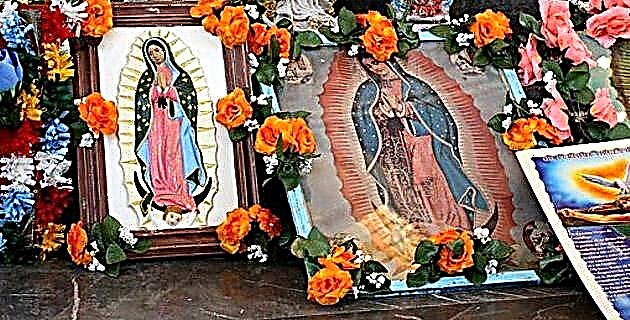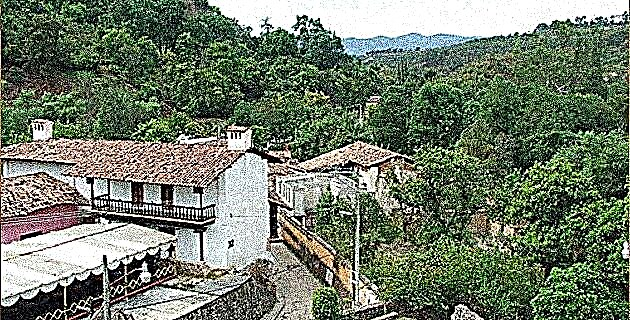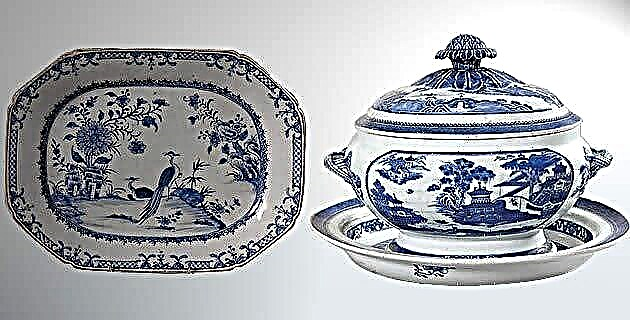
When direct trade between Manila and New Spain was established in 1573, through the Nao de China, a great diversity of luxury objects from the East began to arrive in our country - in addition to the valued spices - such as jewelery, fans, etc. lacquers, hand-painted wallpaper, ivory shawls, furniture, toys and all kinds of silk and cotton fabrics, all objects that captivated for their showiness and rarity. One of them stood out in a remarkable way over the others: the exquisite Chinese porcelain.
The first porcelains to arrive in New Spain were blue and white with fully oriental decoration and shapes; However, from the 18th century onwards, polychrome pieces were incorporated into this trade, among them those of the style that we know today as Company of the Indies Porcelain, which takes its name from the East India Companies - European maritime companies - which were the first to transport and sell it in Europe through a sample system.
The particularity of this porcelain lies in the fact that its shapes are inspired by Western ceramics and goldsmithing and its decoration mixes Chinese and Western motifs, since it was specially designed, molded and decorated to order to satisfy the demanding European taste. and American.
Most of the Porcelain Company of the Indies was made in the city of Jingdezhen, which was the main ceramic center in China; from there, it was taken to Canton, where the variety of pieces were turned over to the workshops that received the porcelains in white, or partially decorated, so that the shields or initials of the future owners were added to them as the orders arrived. .
On the other hand, shipping companies had in their warehouses hundreds of pieces already decorated with the most common designs, which explains why we usually find practically identical models in Mexican and foreign collections.
It was in the middle of the 18th century when the New Spanish elites followed the fashion established by the European taste of acquiring said porcelain and started their orders, but through a different route from that of the Companies of the Indies. As New Spain did not have a maritime company established directly in Canton, the commercialization of the Porcelana de Compañía de Indias was carried out rather by the intervention of the commercial agents of New Spain -based in Manila- or their Filipino partners, who requested the various pieces of porcelain emblazoned with the Chinese merchants who arrived at that port.
Later, when the orders were ready, they were shipped to the New Spain coast. Already here, the large grocers received the merchandise and were in charge of its commercialization, either by selling it in stores or distributing it through commercial houses that sent them to individuals or to the institutions that had sent to make their tableware on special request.
Some other porcelains even came as gifts. Plates, platters, tureens, saucers, jugs, basins, basins, perfumers and spittoons, are some of the objects of daily use, destined for the table, the toilet and, sometimes, for decoration, which the Chinese had to adapt from their traditional designs to meet the demand for porcelain in the West.
Especially for the New Spain market, a series of objects were made such as mancerinas - used together with a cup to drink the popular chocolate - and a series of table services, whose main decoration consisted of the family or institutional shield in the center of the pieces that they made it up.
Such is the case of the famous Proclamation Tableware that had a commemorative rather than a utilitarian function and were commissioned from China to later be distributed among the most renowned men of the town as a reminder of the proclamation of Carlos IV to the throne of Spain. Thus, the City Councils of Mexico, Puebla de los Angeles, Valladolid (today Morelia), San Miguel El Grande (today Allende), the Consulate of Mexico, the Royal Court and the Royal and Pontifical University ordered to play these games as a part more of the lavish celebrations of that baroque society.
The shields that are represented in them were taken from the designs for the commemorative medals made by the famous engraver Gerónimo Antonio Gil, Senior Carver of the Royal Mint and first director of the Royal Academy of San Carlos, who made several models of medals between 1789 and 1791 for some courts, councils and town halls, also as a souvenir of the event. The fidelity with which the Chinese copied their models is remarkable, since they even reproduced Gil's signature on the shields that decorate the objects.
In Mexico today some of these porcelains subsist, both in private collections and in museums, including the National Museum of the Viceroyalty or the Franz Mayer that exhibits at least six outstanding examples of dishes that in their time were part of the Tableware of Proclamation. Generally, the pieces were made from an ordinary paste that results in a texture that resembles orange peel; however, we appreciate in them the care to delineate even the smallest details in the enamelling.
These enamels were made with metallic oxides of all colors, although blue, red, green, pink and gold predominate. Most of the pieces were adorned with a color stripe, a gold luster and a particular border known as "Punta de Lanza", that is, a stylization or interpretation of the fleur de lis and that together with the texture rough are indicative that it is a Porcelain Company of the Indies.
At a time when the elites had a rich, varied and hectic social life that involved parties and gatherings and in which luxury was publicly manifested, both in clothing and housing, this porcelain occupied a prominent place in the trousseau of palaces and mansions, sharing the space with Mexican silver cutlery, Bohemian crystals and elaborate table linen with Flanders lace.
Unfortunately, the production of Porcelain de Compania de Indias declined as the Europeans perfected the art of porcelain - the finest of ceramics - but it is undoubtedly true that this sumptuary art from China significantly influenced the taste of Mexican society at that time and this is reflected in the local ceramic production, especially that of Talavera Puebla, both in its forms and in the decorative motifs.
Source: Mexico in Time No. 25 July / August 1998











